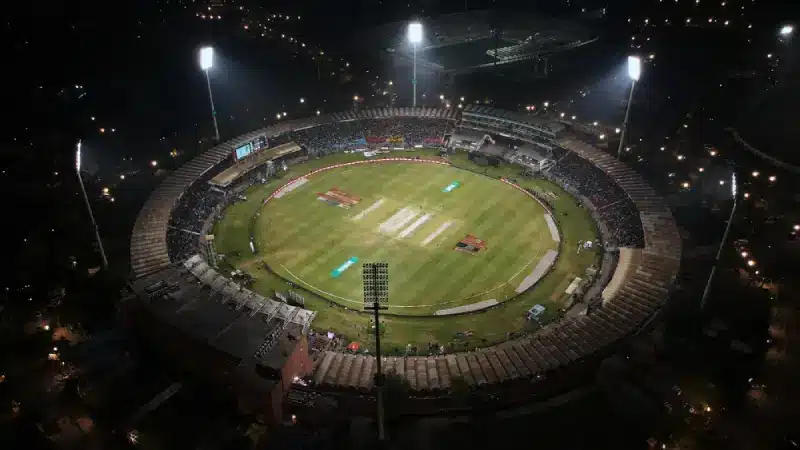
The run rate in cricket is calculated simply by dividing the number of runs scored at any given time by the total overs bowled during that period in an innings.
So if the total score at the end of 15 overs is 90, then the run is 90/15, which is 6.00.
However, the equation needs to be adjusted for calculations to be done during an ongoing over. While the value of runs is taken as is, the value of the balls bowled needs to be calibrated.
Since six balls complete one over, the value of the six deliveries is divided by the six balls that comprise an over. Hence, the first ball is 1/6th of an over (or 0.16), the second ball is 2/6th (0.33), the third ball is 3/6th (0.5), the fourth ball is 4/6th (0.66), the fifth is 5/6th (0.83) while the sixth completes the over.
So, if the score is 107 in 17.2 overs, then the calculation is 107 divided by 17.33, which amounts to 6.17.
This is called Runs Per Over (RPO) and is calculated the same way to establish a single bowler’s Economy Rate in a match, tournament or his career.
The run is calculated the same for any form of cricket, including Test matches, One Day Internationals (ODI) and Twenty20 (T20).
How is the Net Run Rate calculated?
The Net Run Rate (NRR) comes into consideration in tournaments and is only calculated for teams competing. The NRR of a team is calculated by dividing the total number of runs scored by the team in a tournament divided by the total number of balls faced with the result then subtracted by the total number of runs conceded in the tournament divided by the total number of balls bowled.
However, the exception is should a team be all out well before the completion of the regulation overs, then the full quota of overs that the team was supposed to bat is applied.
As an example, in an ODI tournament:
Match 1: India scores 300/5 in 50 overs and beats Pakistan by bowling them out for 270 runs in 40 overs. (Note, Pakistan’s overs will be counted as 50)
Match 2: India scores 275/7 in 50 overs and beats Sri Lanka by restricting them to 232/9 in 50 overs.
It means India has scored 575 runs (300 + 275) in the tournament in 100 overs. This amounts to a run rate of 5.75 per over (575/100)
It also means that India conceded 502 runs (270 + 232) and although bowled 90 overs (40 + 50), the all out rule comes into play to make it 100. The conceded run rate here is 5.02 (502/100).
The Net Run Rate for India in the above example, hence, is +0.73 (5.75 - 5.02).
In case of matches settled by the Duckworth-Lewis method, the team batting first has its scores revised to whatever the team batting second is chasing with subtraction of one run. For instance, If India scores 300/5 in 50 overs batting first and if Pakistan’s DL target is 275 in 45 overs, then India’s revised score is taken as 274 in 45 overs.
Matches that are abandoned or produce no result are taken into consideration to calculate the NRR.
Lead photo: ANDREW CABALLERO-REYNOLDS / AFP




















